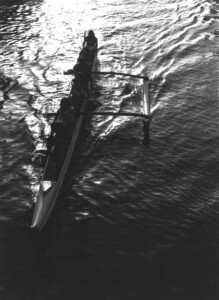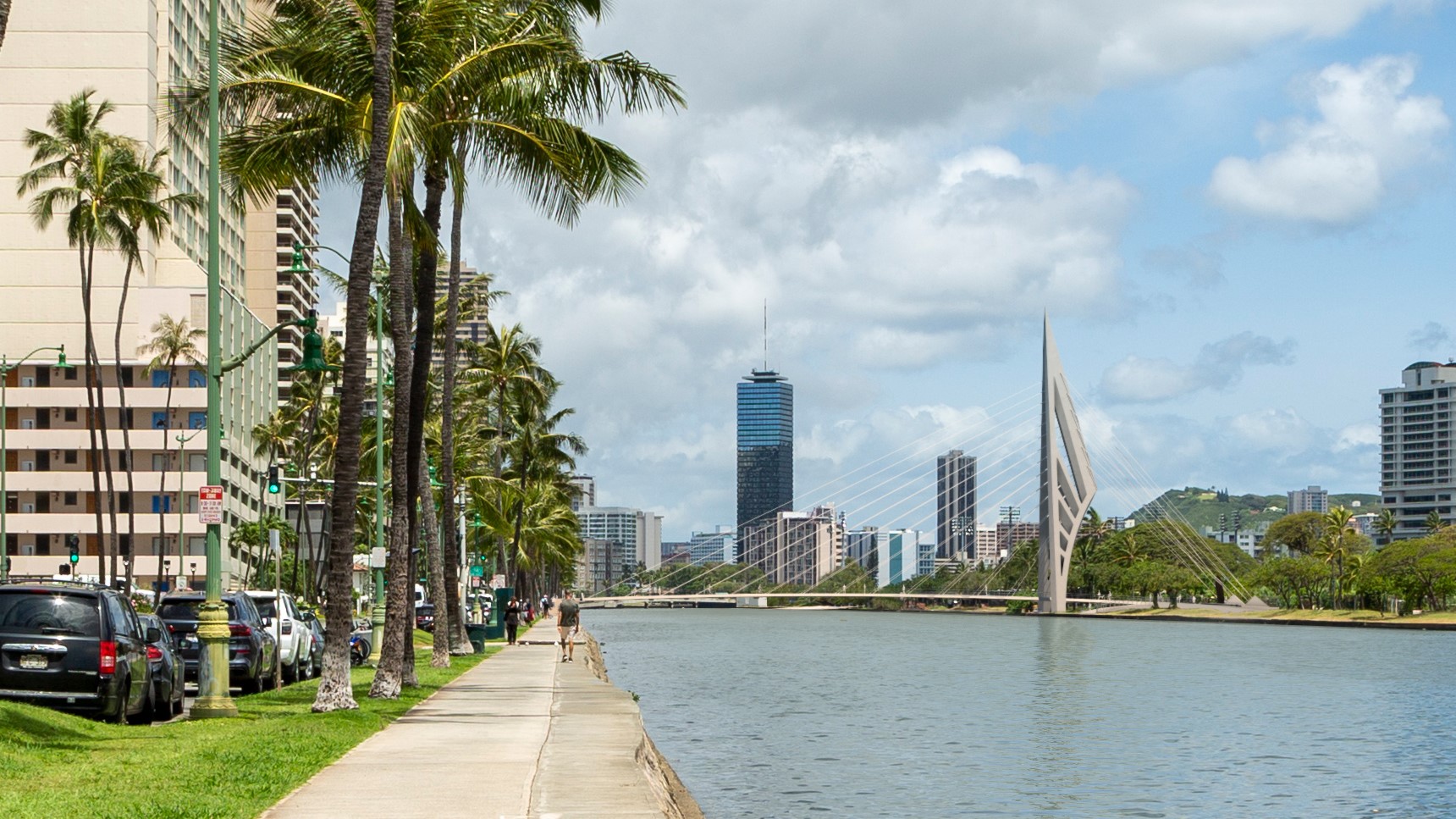On July 16, 2021, HHF released an advocacy update on the Draft Environmental Assessment for the Ala Pono Pedestrian/Bicycle Bridge over the Ala Wai Canal proposed by the The City and County of Honolulu Department of Transportation Services (DTS), in partnership with Hawai‘i Department of Transportation (HDOT) and the Federal Highway Administration (FHWA).
In response, a number of readers sent us their own thoughts about the project, including comments and resolutions they have submitted. While most do not object to the potential benefits of a pedestrian bridge, a number of readers voiced objections to the project’s design, specifically the massive scale of the 180-foot tower.
Mahalo to all who shared their comments with us. A final Environment Assessment is expected by Spring 2022, according to the project timeline. To send comments or questions, please refer to the contact information on the project website: http://www.honolulu.gov/completestreets/alapono.
From Michael Weidenbach, July 16, 2021
I am so appreciative of HHF’s strong advocacy and involvement with this particular development initiative, and hopeful that your involvement will inspire others with some weight in the community to voice their well-considered perspectives about this initiative.
For myself, having spent decades either walking or riding my bike, or driving along it, or paddling my kayak leisurely down the middle of it, or learning to paddle as a member of an outrigger canoe team, I’ve learned to love this murky waterway like a member of the family. For many years I began or ended each day paddling my kayak from the Waikīkī Library on the Kapahulu end all the way out to the Ala Wai Harbor and back. Most times I’d add a side route up the Palolo Stream to Date Street and back with tilapia scooting in front on my bow and night herons startled from their roosts in the shore-side mangroves.
 On one special occasion on the main canal as I approached the McCully Bridge, a manta ray leapt from the water, startling me, almost making me tip. And during box jelly(fish) periods, you would be amazed at how thick they were floating along just beneath the surface, requiring that you very carefully place your paddle in the water.
On one special occasion on the main canal as I approached the McCully Bridge, a manta ray leapt from the water, startling me, almost making me tip. And during box jelly(fish) periods, you would be amazed at how thick they were floating along just beneath the surface, requiring that you very carefully place your paddle in the water.
On one very memorable occasion I discovered that I was actually catching up to a group of outrigger canoes, before noticing that they all had auto tires draped over their bows to provide added drag while training.
And on one other special occasion, not entirely enjoyable, while learning to paddle outrigger canoes myself, we ‘huli’d our canoe, flipped it over, dunking ourselves into the polluted, dark water of the canal. We learned then, how easy it is to walk on water when you have a good reason to.
I’ve also learned to love the Ala Wai’s beautiful graceful arched bridges that are as much a part of the canal as the water itself. They provide segments along the length of the canal that paddlers use, feeling proud to make it from one segment to the next, from the Library end to under the McCully Bridge, than taking a breath before setting out again toward the Ala Moana Bridge, and finally passing under that, and out into the Ala Wai, paddling up and down the rows of yachts before heading seaward as far as I dared before resting a bit, watching the sail boats come in and leave and surfers on their waves, then turning back toward, paddling again from bridge to bridge to home at the far, far end.
If there were another bridge across the canal, at least it should match the existing bridge design and become part of the scenery we love, not destroy the view.
I moved to Hawai‘i nearly fifty years ago and have learned to love the Ala Wai Canal as much as I do every other nook and cranny of our community. The very thought of such an out-of-place intrusion to this unique and wonderful waterway as this engineering initiative proposes, is much more than simply heartbreaking, is it entirely disillusioning.
We have watched so much barely justifiable changes occur to our community over these past decades, and lost so much irreplaceable charm over the years, that this proposed, barely purposeful alteration is very nearly more than our community can absorb, certainly more than I can understand why, or how, or who in their right mind that truly loves and cares about our community would ever dream of proposing, or rather ‘imposing’ on the rest of us.
In my opinion, it truly would be a horrendous, unforgivable intrusion if ever it is achieved.
Again, I’m so thankful for HHF’s advocacy and involvement in this initiative. I remain ever hopeful.
From Laura Ruby, July 16, 2021
Your article on the proposed bridge over the historic Ala Wai Canal did not seem to have a position. I and many others in our Moi‘ili‘ili neighborhood and beyond are decidedly against the bridge which is not “pono.”
Please take a stand against the bridge.
From Konia Freitas, Waikiki Surf Club, May 6, 2021
Laura Ruby sent along the HHF DEA comments for the Ala Wai Bridge project. I wanted to thank you for your comments especially those concerning the Malia. Yes, our canoe club is seriously concerned about our ability to properly care for the Malia koa canoe should the bridge get built, yet we are equally worried that our canoe club may not be able to weather the long term impacts of a bridge right next to our hālau. Who wants to paddle at a club site with a 180 foot tower dominating your practice site? It is for these reasons that we are appreciative of HHFʻs comments to the DEA. Further, your comments help our Board to understand the overall historic preservation processes that we are now involved in. Thanks again.
From Don Hibbard, former administrator, State Historic Preservation Division, Hawaii Department of Land and Natural Resources
Thank you for the fine response letter you wrote to the DEA for this project. Aloha!
Historic Hawaii Foundation’s July 16th article and comments on the Draft EA are available here.


